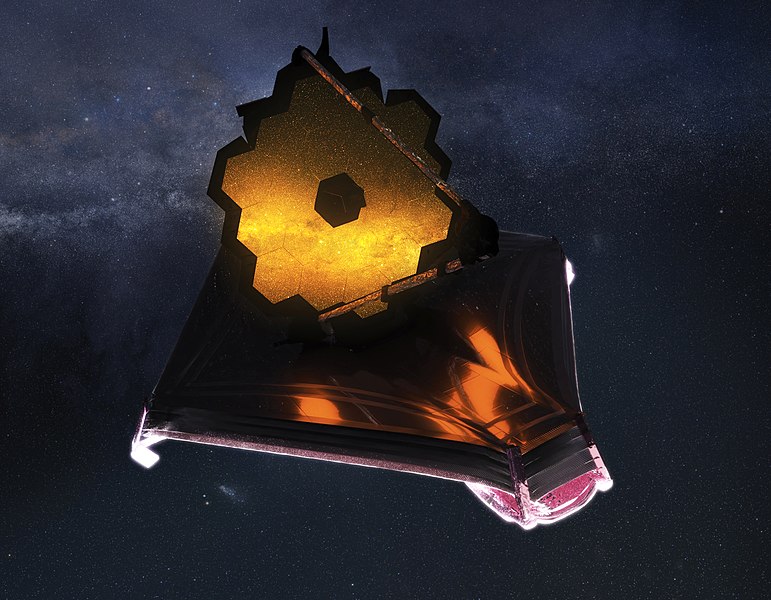Space Missions Minor
LR-MI-232
The minor Space Missions is an interdisciplinary thematic minor provided by Delft University of Technology and Leiden University. This minor is associated with LDE’s ‘Space for Science and Society’ program and is accessible to students of selected BSc programs from all three universities. Students will obtain insight in the science carried out from space as well as the design of associated instrumentation and spacecraft. Through theory and challenge-based mission assignments performed in teams, they will experience the interdisciplinary relationship between the engineering and scientific domain of spaceflight. The missions will be provided and supported by professionals in the space sector (ESA, SRON, etc.) and guided by academic tutors from both the scientific and engineering field.

Coordinated by the Faculty of Aerospace Engineering
Selection criteria: -
ECs: 30
Language: English
Maximum participants: 60
Education period: Q1 and Q2
| Non-selection minor: | |
| Selection minor: |
For whom?
The minor requires a solid entry level of physics and mathematics and is therefore only suitable to students who have sufficient background and being able to keep up with the level of engineering and beta-science at 3rd year BSc level. Most students from the eligible bachelor programs should in principle be able to follow and complete this minor successfully. Some of the eligible BSc majors may however have limited courses on mathematics or physics. If students however obtained high grades in those courses in physics and mathematics at high school, this should sufficiently compensate for the limitations in their current major.
Delft University of Technology: all BSc programs.
Leiden University: Astronomy, Bioinformatics, Physics, Computer Sciences, Computer Science & Economics, Mathematics, Data Science & Artificial Intelligence, Clinical Technology, Life Science &Technology and Molecular Science & Technology.
Erasmus University: Econometrics & Economics, Econometrics & Operational Research, Econometrics and Philosophy of Economics.
What will you learn?
How does our universe look like and how is it formed? Can we detect life-forms on other planets? How can we monitor pollution and climate change? Space missions are key to answer these fundamental questions. It all starts with curiosity and the science that drives these missions. But the idea should also be feasible in terms of engineering. Moreover, new technology can sometimes enable new applications not thought of before. In Space Missions, challenging science and innovative engineering comes together. However, people working on these missions often have limited understanding of the other discipline which sometimes leads to wrong expectations, miscommunication or missed opportunities. The space sector is growing rapidly worldwide and missions become increasingly more demanding. This minor intends to provide the new generation of scientists and engineers with a broad understanding of the main disciplines involved, being able to bridge the gaps in this exciting field!
The qualifications of a student after having followed the Minor include:
- The student understands the scientific goals of space missions and related instrumentation. The student can define and analyse missions for these applications and provide the key characteristics and fundamental physics behind it.
- The student is able to investigate a scientific application, starting from a specified need or conceptual idea, and derive the scientific and technical requirements related to it.
- The student is able to make a conceptual design of an innovative space mission including the preliminary system sizing, main subsystem trade-offs and a project plan.
The learning goals, related to the qualifications, are that the student shall be able to:
- Understand scientific space missions and goals, motivate and quantify their main characteristics and create and evaluate the key requirements within the context of the scientific ambitions, innovative technologies and organizational resources and constraints.
- Describe, explain, compare and select instrumentation, spacecraft and ground segment components according to specific mission and/or subsystem requirements.
- Design and evaluate scientific space applications, compare this with existing solutions and identify novel applications relevant to the body of science.
- Design and evaluate the top-level of an innovative space system for a scientific application and compare this with state-of-the-art technology.
Course overview
The minor comprises specific courses on scientific applications of Space Missions and the engineering of spacecraft and its instruments. The minor will be concluded by a large mission assignment which will be performed through several modular courses. All courses are developed specifically and exclusively for the Space Missions minor.
Part | Domain | Code | Course | Study load |
|---|---|---|---|---|
A (Q1) | Science Courses | CT3533 | Earth Observation | 3 |
| AE3522UL | Astronomy* | 4 | ||
AE3523 | Planetary Sciences | 3 | ||
Engineering Courses | AE3524 | Spacecraft Design & Astrodynamics | 5 | |
AE3524E | Additional Assignments* | 4 | ||
B (Q2) | AE3529 | Space Instrumentation | 5 | |
Mission Assignment | AE3538 | Engineering Case Study | 5 | |
| AE3539UL | Scientific Case Study | 5 |
These BSc majors require specific tailoring of the program:
-
The Astronomy course has 100% overlap with a selection of the Astronomy BSc major. Therefore, its students enrolled in the minor will follow a 4 ECTS course extension of Spacecraft Design & Astrodynamics instead in which they will perform two extended assignments (see course description for more details).
-
The Spacecraft Design & Astrodynamics course contains approximately 40% (2 EC) overlap with Aerospace Engineering BSc major. Therefore, its students will follow one extended assignment which counts for 2 EC instead assignments (see course description for more details).
-
When students can only select a 15 ECTS minor due to restrictions of their BSc program, they are eligible to only follow Part A in the first academic quarter. For part A, qualifications and learning goals 1 and 2 apply.
Education methods
-
In these courses, the scientific field and their main questions are studied. Illustrated with real mission examples, signals and remote sensing techniques will be taught and students will learn to derive the requirements for scientific missions.
-
In these courses, background is provided for the engineering of spacecraft orbits, spacecraft design and space instrumentation. The courses provide the physical working principles, system sizing and main design trade-offs.
-
The assignment is an integrated approach on a mission case study. Groups of students of mixed BSc majors apply the knowledge, starting with a top-level scientific mission analysis, mission design and preliminary system sizing using the collaborative design facility at TU Delft. Some lectures will be given covering basics in the field of space projects and systems engineering. After this, the science case and the space system design are worked out in separate modules.
-
A few excursions are foreseen such as a visit to ESA-ESTEC and the ‘Sterrewacht’ in Leiden. An opening and closing event for the minor will be held. These activities are not assessed, but will enrich the experience of the minor.
Register for this minor
Registration is open to students of the eligible BSc programs. The capacity is limited to 60 in total of which 35 places are reserved for TU Delft, 20 places for University of Leiden and 5 for Erasmus University.
The eligible programs are listed in the admission matrix. More information about general registration procedures and timelines can be found on the TU Delft minor webpage. Please note that the Space Missions minor falls under the category ‘non-selection minor’.
